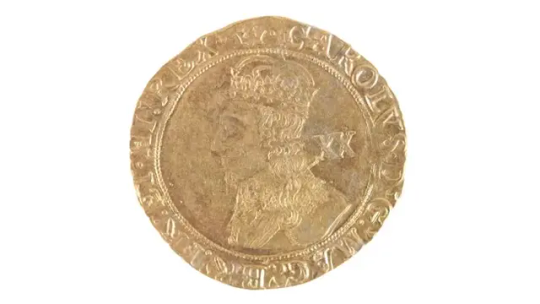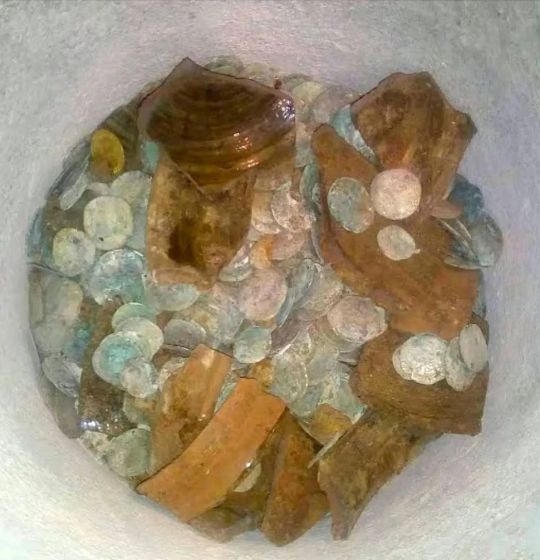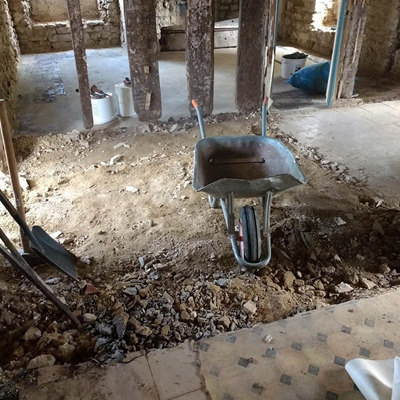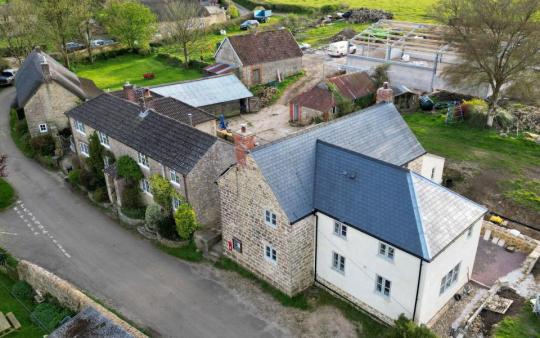#edward vi of england (six)
Explore tagged Tumblr posts
Text










Six The Musical as Tweets pt47
#six#six the musical#anne boleyn#catherine of aragon#catherine parr#katherine howard#jane seymour#anna of cleves#anna von kleve#catalina de aragon#anne of cleves x jane seymour#anne of cleves#jane seymour x anna of cleves#jane seymour x anne of cleves#clevemour#anna of cleves x jane seymour#araleyn#catherine of aragon x anne boleyn#anne boleyn x catherine of aragon#henry viii#henry viii of england#edward vi of england#edward vi#edward tudor vi#six the twitter#six the musical twitter#six twitter#twitter#tweets
95 notes
·
View notes
Text
Random ass headcanon to get me back into this fandom
- Cathy’s back always hurts because she sits like a shrimp while writing or focusing on stuff.
- Kat, despite being great at baking, cannot fry any food for her LIFE. Like, cakes = amazing results, cookies = so tasty to the point that the cookie jar was empty the next day, bread = succeed the first try. but frying? omlette = scrambled eggs, nuggets = burnt, fried fish = burnt fish.
- Anna have realized she’s gay since the 16th century.
- Jane can crochet, Knit, cross stitch, needle punching, macrame, quilt and any other textile art. And despite barely able to read,she can read knitting and crochet patterns.
- Anne sometimes speaks only in French to bother everyone.
- Lina has a sword collection, both fake and real.
- Mary, despite acting mean to everyone, won’t say nor do anything mean to her mother.
- Elizabeth, when asked why she never married, just answered “why fall in love when you can fall asleep”.
- Edward like to go out and skateboard with Anna and Kat.
#six the musical#six headcanon#anne boleyn#catherine of aragon#anne of cleves#anna of cleves#kathryn howard#cathrine parr#jane seymour#mary i of england#elizabeth i#edward vi
21 notes
·
View notes
Photo

Henry VIII of England
Henry VIII of England ruled as king from 1509 to 1547 CE. The second Tudor king after his father Henry VII of England (r. 1485-1509 CE), Henry had inherited a kingdom which enjoyed both unity and sound finances. Famous for his six wives as he searched for a male heir, the king was charismatic and domineering. In order to escape his first marriage, Henry set himself against the Pope and so began the Reformation of the Church in England whereby it broke away from Rome and the English monarch became its supreme head. A larger-than-life figure, Henry centralised government, further absorbed Wales into his kingdom, saw to the Dissolution of the Monasteries, formed the Royal Navy and built magnificent palaces such as St. James' in London. When Henry died, though, in 1547 CE, he was succeeded by his juvenile son Edward VI of England (r. 1547-1553 CE) and he left him an impoverished kingdom split over religious issues.
Henry Tudor
Henry Tudor had defeated and killed Richard III of England (r. 1483-1485 CE) at the Battle of Bosworth in August 1485 CE in the last major action of England's dynastic dispute known as the Wars of the Roses (1455-1487 CE). The House of Lancaster had finally defeated the House of York but Henry, crowned Henry VII of England in October 1485 CE, was intent on creating a brand new ruling house: the Tudors. Henry married Elizabeth of York (b. 1466 CE), daughter of Edward IV of England (r. 1461-70 & 1471-83 CE), on 18 January 1486 CE and he even combined the livery badges of York and Lancaster to create a new royal symbol: the Tudor Rose. England was about to enter the post-medieval era with a new look and a new type of monarchy.
Continue reading...
34 notes
·
View notes
Text

[Would it have made a difference if Rhaenyra and Aegon were full siblings, only a year apart? If they were full siblings, regardless of age, the son have inherited rather than the daughter. I had to make it more complicated than that. Two children by different mothers, different wives? First wife and second wife? I always look to history for inspiration, and if you look at Henry VIII and his six wives, he had a daughter by his first wife, Catherine of Aragon, and that was Mary Tudor, Queen Mary I. And then he had a daughter by his second wife, Anne Boleyn, and that was Queen Elizabeth. Then by the third wife, Jane Seymour, he finally had a son, Edward VI. He was third in line, but he was the first to become king. History is full of these kinds of conflicts.]
I needed to read this twice.

Edward wasn't third in line!!!!!!!!! He was the youngest of Henry's three surviving children, but since England followed male preference primogeniture until very recently, he was FIRST in line after his father died and if he had sired a child before his death, that child would have been his successor. The potential problem with the succession was that if Henry's marriage to Catherine was valid, then Elizabeth was illegitimate, but if their marriage was invalid then Mary was illegitimate.
As @duxbelisarius pointed out if Martin really wanted a Matilda/Stephen analogy Rhaenys and Viserys are right there. But that would require painting his beloved Daemon in a negative light.
125 notes
·
View notes
Text







Six Wives of Henry VIII
1. Catherine of Aragon (m. 1509–1533): Spanish princess, mother of Mary I. Henry divorced her because she didn’t produce a male heir, leading to the creation of the Church of England.
2. Anne Boleyn (m. 1533–1536): Mother of Elizabeth I. She was beheaded at the Tower of London.
3. Jane Seymour (m. 1536–1537): Gave birth to Henry’s only male heir, Edward VI. She died of postnatal complications shortly after his birth.
4. Anne of Cleves (m. January–July 1540): A political marriage arranged for alliance purposes. Henry found her unattractive and quickly had the marriage annulled. They remained friends afterward.
5. Catherine Howard (m. 1540–1542): Much younger than Henry. She was beheaded at the Tower of London.
6. Catherine Parr (m. 1543–1547): Outlived Henry. She was a strong, intelligent woman who helped reconcile Henry with his daughters, Mary and Elizabeth. She later remarried after his death.
#henry viii#catherine of aragon#anne boleyn#jane seymour#anne of cleves#catherine howard#catherine parr#the tudors#history
14 notes
·
View notes
Text

Hoard of 17th-Century Coins Hidden During English Civil War Found
During a kitchen renovation, a family in England unexpectedly discovered a hoard of coins that was likely buried for safekeeping during the first English Civil War.
A family in England discovered nearly 400-year-old buried treasure during a recent home renovation project. The find includes more than 1,000 gold and silver coins that were likely hidden during the first English Civil War.

Betty and Robert Fooks unexpectedly unearthed the 17th-century hoard at their cottage in South Poorton Farm, Dorset, in 2019. Now, these coins have hit the auction block and sold for upward of $75,900 (60,740 British pounds), according to the hammer prices listed by Duke's, an auction house in Dorchester that handled the sales.
Robert Fooks made the discovery while pickaxing the kitchen floor to remove about 2 feet (0.6 meter) of flooring material, including modern concrete, old flagstone and bare earth. Then, he saw a broken glazed-ceramic vessel brimming with coins in the layer of soil dating back about 400 years. It's unclear if the bowl was broken before or during the recent discovery, according to Duke's.
The couple contacted a local finds liaison officer, who arranged for the coins to be sent to the British Museum, where they were cleaned and identified, according to The Guardian. The British Museum noted that the coins were likely deposited on a single occasion between about 1642 and 1644, dates likely based on the coins' mint dates.

The coins in the collection, named the Poorton Coin Hoard, range from modest sixpences, which were worth six pennies, to a coveted gold "unite" coin that was worth 20 shillings, or 1 pound, and depict the visages of English monarchs Edward VI; Mary and her husband Philip; Elizabeth I; James I; and Charles I, who ruled successively from 1547 to 1649.
Many of the coins sold individually or in groups at auction on April 23. A single gold coin of Charles I brought in the highest price, at 5,000 British pounds ($6,260), while some lots went for far more than their estimated value.
The period in which the coins were likely hidden — 1642 to 1644 — coincides with the first English Civil War, which lasted from 1642 to 1646. The three civil wars were fought between supporters of the English monarch, then Charles I, and Parliament, to determine the balance of power between the crown and Parliament.



"Perhaps the most important short-term significance of the Civil Wars was that it culminated in the execution of King Charles I in 1649 and a republic was established for the first time in English history which lasted 11 years," Waseem Ahmed, a doctoral student of history at University College London who specializes in 17th century British political history but was not involved in the hoard's discovery or analysis.
It's no surprise that people hid their money back then, as warfare during this time included the seizure of opponents' property, he said.
"If you were a royalist or suspected royalist, you could have your estates sequestrated (seized) by the Parliamentary side and vice versa," Ahmed explained. This may be the case for the 17th-century homeowner, as Dorset was a hotspot for troop movements and the turbulence that followed.
It's likely that someone buried the Poorton Coin Hoard with the hopes of safeguarding it and retrieving it later. And while the treasure was certainly safeguarded, its retrieval took four centuries longer than its owner likely desired.
"If we hadn't lowered the floor, they would still be hidden there," Betty Fooks told The Guardian. "I presume the person intended to retrieve them but never got the chance."
By Hannah Kate Simon.


#Hoard of 17th-Century Coins Hidden During English Civil War Found#Dorset England#gold#silver#coins#collectable coins#ancient artifacts#archeology#archeolgst#history#history news#Poorton Coin Hoard#English Civil War
49 notes
·
View notes
Text
you wonder why the scots were so unstable, then you look at their monarchy and realise they had seven child monarchs in a row. oh your king's a twelve-year-old? that sucks. what, he's been assassinated? huh! good thing his heir-- HE'S SIX? good thing he isn't going to die a ridiculous death like getting blown up by a cannon any time soon! BUT NOT FOR LONG! what, he was actually blown up by a cannon? wow. anyway, we're leaving the throne in the capable hands of a nine-year-old. that won't go wrong! OR SO WE THOUGHT! well, at least it wasn't a cannon that took him out this time, just a little bit of rebellion and war. and we're leaving the throne in the capable hands of a competent and popular ruler.
BUT NOT FOR LONG! this idiot gets absolutely wrecked at the hands of the english. and by wrecked, i mean killed. great news for henry viii, terrible news for little one-year-old jamie (his nephew, i should point out), a.k.a. your highness, and fifth in a long line of idiots called james. (you'd think they'd learn to pick another name.) things work out eventually, right up until henry viii's lot come back onto the scene and get into a bunch of fights with the scots. unbelievably, things are about to get so much worse. in a real smart move, james dies at the grand old age of thirty. (i feel the need to point out that none of these jameses lived past the age of forty-two. and that's being generous.)
enter mary. she's catholic! she's not called james! she's the queen of scotland! and guess how old she is? six days! yes, you heard that right - six days. (and you thought six years was bad.) she's eventually whisked away to live in france and later marry the dauphin, handily solving the problem of the english trying to kidnap her and marry her off to edward vi. (she's five at this point. edward is ten. françois, the dauphin, is three. don't think too hard about any of that.)
they grow up. edward dies at fifteen. mary i, best known for her fondness for barbecues, dies five years later. françois, sensing a trend, dies two years after that at sixteen. mary returns to scotland, and all is well.
OR SO WE THOUGHT! whilst england was busy being torn apart by religious matters, scotland was busy being torn apart by religious matters. (you'll never guess what's happening in france.) mary, of course, is a devout catholic. some of the scots, who have spent twelve years without a monarch, let alone a catholic girl raised in france, are... not. rebellions! political instability! back to the status quo, basically. john knox is not happy, but when is he ever? elizabeth i kindly tries to help things by sending her bestie robert dudley (yes, that robert) to marry mary. this, unsurprisingly, does not go down well. fortunately, mary solves all these problems by creating a new one: she marries her half-cousin, henry lord darnley! yuck! i mean, yay! more rebellion (led by mary's half-brother)! henry turns on mary because he wants more power! he allies with the protestant lords, and they stab mary's private secretary to death in front of her whilst she's pregnant! the usual.
BUT NOT FOR LONG! mary and henry escape, they have a lovely little son called james (they still hadn't learn their lesson about scottish jameses), and they all live happily ever after until henry's house is blown up and he's found smothered outside in broad daylight. suspects include: everyone in scotland. but mostly lord bothwell, who proceeds to kidnap mary and marry her. now, you may struggle to believe this, but things go downhill from here. mary is eventually forced to abdicate, and flees to england. bothwell is imprisoned in denmark, and later goes insane. as for james, now the one-year-old james vi (anyone sensing a pattern here?), well, he's probably too busy learning to speak to care. because, you know, he's one. some people never learn.
from this point onwards, mary's kept under house arrest by elizabeth i. in a display of gratitude towards elizabeth, mary promptly spends the rest of her life plotting against her. or being involved in plots. in the meantime, james's regent, also called james stewart (mary's aforementioned half-brother; the name is cursed), earns the dubious honour of being the first head of government to be assassinated with a firearm. eventually, after mary, that virtuous angel, actively tries to kill elizabeth, elizabeth gets fed up and drops a sword on mary's neck. james, who last saw his mother at the age of zero years old, must have been devastated.
you all know what happened next: elizabeth died at the grand old age of sixty-nine, and james inherited the throne. thus followed decades of religious instability, parliamentary infighting, and stubborn monarchs who refused to listen to reason, which were surely new to the elizabethans. james, who was what is commonly known these days as a "hot mess" or "bisexual disaster" - don't quote me on that - was nearly blown up in a plot masterminded by a guy called tosser. sorry, i mean a tosser called guy. he also pissed everyone off by being a bit too buddy-buddy with several men, possibly lovers. (probably lovers.) that was not the end of the curse of james stewart (see: james ii of england), but it did at least put an end to mary queen of scots. oh, and england and scotland were united. that too. cue much chaos with a man you've probably heard of, named oliver cromwell... the rest is history. i mean, all of this is history, but you know what i mean.
and that's the story of why having seven child monarchs in a row is a really fucking bad idea!
116 notes
·
View notes
Text





On Hogmanay 1720 Prince Charles Edward Stewart was born in Rome.
Prince Charles' childhood was lively and full. By the age of six, he was fluent in reading English, French and Latin, was gaining a firm grasp of music, and he rode and shot with enthusiasm.
Europe became increasingly restless when Emperor Charles VI died in 1740, and tension mounted between Protestant England and Catholic/Jacobean communities in both Scotland and France.
Charles' ambition and desire for military success led him to plan an invasion of England, in order to capture the throne for his father, from George II.
After a period in France following a failed attempt to gain support, Charlie landed in Scotland on 25th July 1745. He gained support from the Highlands and his army successfully fought General John Cape's men. at the Battle of Prestonpans, his army attempted to continue to London. They were forced to retreat back to Scotland, after receiving reports of overwhelming armies prepared to defend the city. Charles did not give up completely and continued to lead his men into battles.
However, after the disastrous defeat at Culloden Moor, Charles was forced to spend the next five months as a hunted man. It is not completely clear how Charles spent these months, although it appears he disguised himself as a 'Mr Sinclair', a ship-wrecked merchant, and later on more famously as a lady, 'Betty Burke'.
In 1748, the war between France and England ended and the English insisted the French exile Charles. He was forced to spend the rest of his life moving around Europe in a range of guises. He had a daughter, by his Mistress, Clementina Willeinshaw, in October 1753, but the relationship ended in 1760 - amid tales of jealousy and violence.
By the age of 45, Charles had few supporters and was excluded from his father's will. (Luckily his younger brother Henry, the main beneficiary, was honourable enough to give Charles all he deserved.)
He married a nineteen-year-old bride in 1772 but, after another break down, forced her into a Convent. From 1783, 'Bonnie Prince Charlie' was ill and was nursed by his daughter until 1788, when he suffered and stroke and died on 31 January, aged 68.
His legend continues despite it mainly being based on only one year in Scotland.
10 notes
·
View notes
Note
To elaborate my ask on Robert D Artois: while a horrible human being, he, at least for me, really worked as a rogue, someone I m still invested in despite all his evil acts. So I thought he might have been an early inspiration for Daemon Targaryen. A character that became someone I sadly couldn t care for in the least, seeing what became of the original idea of a man made up "as much of darkness as of light"..
I think it’s very possible that GRRM was thinking of Robert of Artois as a partial inspiration for Daemon. By the author’s own admission, his fondness for Daemon is a reflection of his “notorious” love of gray characters, and indeed GRRM cheerfully refers to Daemon as “a notorious bad boy, a rogue in every sense of the word”. This description could, I think at least to some extent, be applied to Robert as well. Not only is Maurice Druon even more explicit in his love of Robert of Artois - quite literally saying, at the end of The Lily and the Lion, that having been “compelled by history to kill off his favorite character”, he, Maurice Druon, was “moved to a sorrow comparable to that of King Edward of England”, so much so that Druon had “no desire to continue” - but Druon also was not shy about portraying Robert roguish or less savory qualities (though more in a moment on that portrayal). Throughout the novels, Robert murders people, rapes women, forges documents, and conspires to overthrow both the King of England and the King of France - definitely not an angel, in other words.
Of course, one very important distinction, I think, between Robert and Daemon is in the ultimate ambition and motivations of each character. GRRM stated that he enjoyed the character of Daemon in part because Daemon was “unpredictable”, as “you never know what side he’s going to come down on”. While that is somewhat true for Robert as well - he does, again, ardently support the accession of Philip of Valois to be King of France, only to later fall out with Philip and promote young King Edward III of England as the rightful King of France - Druon is very clear that Robert had one goal above all else - to regain the county of Artois, which had been given to his aunt Mahaut instead of himself. The claim to Artois was at the heart of all Robert’s actions, from denouncing Countess Mahaut’s daughters in the Tour de Nesle Affair to seizing the county by force during Louis X’s reign to fabricating documents showing his right to the county in the reign of Philip VI. If it is not quite clear what Daemon wanted specifically at every given moment, the same cannot be said of Robert of Artois; whatever actions and whatever faction would lead him to Artois is where Robert would take or would support.
Too, it’s important to acknowledge the difference between the works in which these characters are presented. We as readers only experience Daemon in pseudo-historical works, The World of Ice and Fire and Fire and Blood. Because these books are (in-universe) written from the perspective of maesters living more than a century after Daemon’s death, we as readers are kept at arm’s length from Daemon’s thoughts and feelings, and consequently that sort of personal connection more easily made with characters in the main novels. By contrast, Maurice Druon himself is effectively the narrator of (the first six novels of) The Accursed Kings, and so more able to indulge his love of Robert directly (especially, and it has to be noted, given Maurice Druon’s generally misogynistic writing in these novels). We as readers of The Accursed Kings are almost explicitly directed to sympathize with Robert, and even sometimes to see his bad actions as justified or excusable. Druon himself explains in the “Historical Notes” of The Iron King that “the decision in [Mahaut’s] favour [i.e. regarding Artois] was largely influenced by these alliances which brought to the crown notably the County of Burgundy”, while Pope John XXII later thinks in The She-Wolf of France that “Robert of Artois, the rowdy giant, the sower of discord, the assassin even … the black sheep, was nevertheless more worthy perhaps, when all was said and done, than his cruel aunt, and that he possibly had some right on his side in his fight against her”. Even when Robert has his henchman strangle Marguerite of Burgundy (in what I think will be a parallel to Cersei), Maurice Druon praises Robert for telling Marguerite that he had desired her, as in the author’s words “[n]o man is completely bad”, and “the Count of Artois at that moment said one of the only kind things that had ever issued from his lips”.
18 notes
·
View notes
Text








♕ @dailytudors: TUDOR WEEK 2023 ♕
Day Six: Favourite Portrayal of a Tudor Family Member >> 2/3 -Oliver Zetterstrom as Edward VI, King of England in Becoming Elizabeth
#becoming elizabeth#becomingelizabethedit#perioddramaedit#tudorweek2023#oliver zetterstrom#edward vi#my edits#dailytudors
108 notes
·
View notes
Text










Six The Musical as Tweets pt64
#six the musical#six#anne boleyn#catherine of aragon#catherine parr#katherine howard#anna of cleves#jane seymour#anna von kleve#catalina de aragon#mary i#mary i of england#elizabeth i#elizabeth i of england#edward vi#edward vi of england#araleyn#catherine of aragon x anne boleyn#anne boleyn x catherine of aragon#six twitter#six the twitter#tweets#Twitter
47 notes
·
View notes
Text



⚜️ Field Armor of King Henry VIII of England, Italian, ca.1544
The Metropolitan Museum of Art, New York
⠀
Today in History 📅
In 1534 English parliament passes the Act of Supremacy making Henry VIII and all subsequent monarchs the Head of the Church of England
⠀
10 facts about Henry VIII:
1. Henry VIII (1491–1547) is one of the most written about kings in English history. He established the Church of England.
2. In his youth, he was one of the Catholic Church’s staunchest supporters.
3. He is credited with establishing the Royal Navy, encouraging shipbuilding and the creation of anchorages and dockyards.
4. Not only could Henry speak Latin, French, Ancient Greek and Spanish, but also played the lute and organ, sang, played tennis and jousted.
5. Henry VIII was a merciless king.
He sent more men and women to their deaths than any other English monarch. In fact, it's estimated 57,000 - 72,000 people were executed during his 37-year reign.
6. He is the only English monarch to have ruled Belgium.
Henry captured the city of Tournai in 1513 and went on to rule it for six years. However, the city was returned to France in 1519 following the Treaty of London.⠀
7. He was paranoid about illness, terrified he would die before he had an heir.
8. He had six wives in total.
They were Catherine of Aragon, Anne Boleyn, Jane Seymour, Anne of Cleves, Catherine Howard and Catherine Parr.
9. He died in debt. Henry was a big spender. By his death on 28 January 1547, he had accumulated 50 royal palaces and spent vast sums on his collections and gambling. Not to mention the millions he pumped into wars with Scotland and France. When Henry’s son, Edward VI, took the throne, the royal coffers were in a sorry state.
10. Henry VIII was the first English king to be called 'Your Majesty.'
⠀
- -
⚜️ Полевые доспехи короля Англии Генриха VIII, Италия, ок. 1544
⠀
Этот день в истории 📅
В 1534 году Английский парламент принимает Акт о верховенстве, в соответствии с которым Генрих VIII и все последующие монархи становятся главой Англиканской церкви
⠀
10 фактов о Генрихе VIII:
1. Генрих VIII (1491–1547) — один из самых популярных королей в английской истории. Он основал англиканскую церковь.
2. В юности он был ярым сторонником католической церкви.
3. Ему приписывают создание Королевского морского флота, развитие судостроения и создание якорных стоянок и верфей.
4. Генрих не только мог говорить на латыни, французском, древнегреческом и испанском языках, но также играл на лютне и органе, пел, играл в теннис и участвовал в рыцарски�� турнирах.
5. Он был беспощадным королем.
По разным оценкам, за время его 37-летнего правления было казнено от 57000 до 72000 человек.
6. Он единственный английский монарх, правивший Бельгией.
Генрих захватил город Турне в 1513 г. и правил им в течение шести лет. Однако в 1519 г. город был возвращен Франции по Лондонскому договору.
7. Он был параноиком в отношении болезней и боялся, что умрет, не успев обзавестись наследником.
8. У него было 6 жен. Это были Екатерина Арагонская, Анна Болейн, Джейн Сеймур, Анна Клевская, Екатерина Говард и Екатерина Парр.
9. Он умер в долгах.
Генрих был большим транжирой. К моменту своей смерти 28 января 1547 г. он успел построить 50 королевских дворцов, потратить огромные суммы на свои коллекции и азартные игры. Не говоря уже о миллионах, которые он влил в войны с Шотландией и Францией. Когда сын Генриха, Эдуард VI, вступил на престол, королевская казна находилась в плачевном состоянии.
10. Генрих VIII был первым английским королем, которого называли Your Majesty («Ваше Величество») вместо Your Grace («Ваша милость»).
⠀
#ArmsandArmour #история #доспехи #средневековье #armour #medievalarmour #armsandarmor #history #ГенрихVIII #HenryVIII
#medieval#средневековье#middleages#history#armor#armours#история#harnisch#armadura#armour#henryviii#генрих viii
48 notes
·
View notes
Photo

Edward VI of England
Edward VI of England reigned as king from 1547 to 1553 CE. Succeeding his father Henry VIII of England (r. 1509-1547 CE), Edward was only nine years old at the time and so the kingdom was ruled by a council of nobles, foremost among whom was Edward's maternal uncle, Edward Seymour (l. c. 1500-1552 CE) until he was replaced by John Dudley, the Earl of Northumberland (l. 1504-1553 CE). During Edward's reign, Protestant religious reforms continued as the Church of England broke further away from the traditions of the established Catholic Church directed by the Pope. There were also popular uprisings as the economy faltered and inflation was rampant. Edward's reign was short as he died of tuberculosis aged just 15. He was succeeded by his cousin Lady Jane Grey (1537-1554 CE) until what the majority of the people and nobility regarded as the rightful heir, his elder half-sister, was installed nine days later as Mary I of England (r. 1553-1558 CE).
Henry VIII & The Succession
Henry VIII married six times but it was his first three marriages that each produced a future monarch. With Catherine of Aragon (1485-1536 CE), Henry had a daughter, Mary (b. Feb. 1516 CE). With Anne Boleyn (c. 1501-1536 CE), there was another daughter, Elizabeth (b. Sep. 1533 CE). With wife number three, Jane Seymour, who was a lady-in-waiting at court, Henry had his first and last legitimate son, Edward, born on 12 October 1537 CE in Hampton Court Palace. At the joyous news, there followed 2,000 cannon shots let off in the Tower of London, bells rang out across England and there were 24 hours of parties and feasts but, tragically, Jane died 12 days after giving birth, most likely from post-natal fever.
As the first marriage was annulled to permit the second and Anne Boleyn was executed on charges of adultery, so each of their children was disinherited and it was Edward who became the official heir to the throne. As more wives came and went and no more children were forthcoming, Henry changed his mind in 1544 CE and declared that Edward could be succeeded by his half-sister Mary with Elizabeth next in line.
Henry VIII's health declined rapidly in his later years as the king became seriously overweight and suffered a badly ulcerated leg. The king died on 28 January 1547 CE at Whitehall Palace in London; he was 55 years old. Henry was buried in Saint George's Chapel at Windsor Castle, next to his late third wife, Jane Seymour, and he was duly succeeded by Edward who became Edward VI at his coronation in Westminster Abbey on 20 February 1547 CE. Henry, having split the Church in England from Rome to acquire his first marriage annulment and gone on a massive spending spree on palaces and wars, left his son an impoverished kingdom split over religious issues and, particularly, whether or not to press on with reforming the Church.
Continue reading...
24 notes
·
View notes
Note
Anne Boleyn wasn’t exactly a Protestant as is often said but she was a Reformist. She still held on to some of the Catholic beliefs such as the doctrine of transubstantiation but rejected papal authority, promoted erastianism and worked on getting the Bible translated into vernacular English so the common people of England could read it and understand it (The Bible was released shortly after her death, with the dedication page hastily changed to Queen Jane’s name). She wanted to purify the Catholic church of things she saw as abuses (such as the extreme wealth of the Catholic Church, and excessive accumulation of wealth in general, selling salvation — literally!) and superstitions. She’s the one who introduced Henry VIII to the idea of becoming Head of the Church of England by giving him a book written by William Tyndale, Obedience of a Christian Man, with certain passages marked by the impression of her fingernail. It was a bold move because the book was banned and had been seized by the Church when they found it in her possession. Anne asked Henry to get it back for her and read it. (Anne’s brother, George Boleyn, smuggled banned religious texts for her, purchasing them on his travels to the Continent.)
Anne sheltered religious dissidents. She saved the life of the French reformer Nicolas Bourbon as she had appealed to the French royal family to spare his life as a favor to the English Queen. Nicolas Bourbon would later refer to Anne as “the queen whom God loves.” She restored Richard Herman to the membership of the English Society of Merchants, from which Cardinal Wolsey had expelled him for his involvement in translating the New Testament into English. Anne also offered safe passage to England to French humanist reformers. She paid for scholarships so Reformist scholars could attend the universities. (Many of them stayed after they graduated to teach the next generation and spread Reformist ideas.) She personally selected six of the nine bishops appointed during her reign. She was extremely charitable and generous and sew shirts for the poor. When monasteries were dissolved, Anne advocated the redistribution of their resources and wanted to use the money to fund educational programs and other charitable causes. On the other hand, Thomas Cromwell, Henry’s chief minister, wanted to transfer these funds to the king’s coffers.
In short, religious issues were the primary focus of the work she did during her reign. Her goal for the advancement of a more tolerant religious point of view was unusual in an age that favored rigid religious practice. It’s one of the reasons she was so deeply unpopular — she was seeding “heresy” in so many areas. Eustace Chapuys, the Imperial ambassador in England, regularly complained to his home government of “the concubine” being “the cause and nurse of the spread of Lutheranism in this country”. They were right to be alarmed; Anne Boleyn’s work helped lay the foundations of the Anglican church. It would later be expanded upon by Queen Kateryn Parr, who appointed two of Anne’s scholarship students to be the tutors of Edward VI, the first Protestant monarch.
Wow. Yeah, this is displays a lot more devotion to a certain mission and a desire to change a society or a generosity that some people tried to say Alicent displays--which was never actually spelled out or claimed even in F&B, btw!--as reason for them to believe that Alicent was a good Queen or just a good person. The whole Queens-as-leads-of-charity-and-alms thing. Can't find the post.
#ask#anne boleyn#english history#the tudors#William Tyndale#henry viii#Nicolas Bourbon#Richard Herman#Cardinal Wolsey#Thomas Cromwell#Eustace Chapuys#Kateryn Parr#Edward VI#the anglican church#english reformation#anglicanism#english queens#european queens#european history
13 notes
·
View notes
Note
Hello, can you explain who sided with who from the peerage during Henry VI Readeption? Which side had more support?
Hi! I'm just going to post an excerpt from False, Fleeting, Perjur'd Clarence: George, Duke of Clarence, 1449-7 by Michael Hicks, which sums up the situation:
“The Readeption had enjoyed the military support of the Dukes of Somerset and Exeter, the Marquis Montagu, the Earls of Devon, Dorset, Pembroke, Oxford and Warwick, Viscount Beaumont, and Lords St. John, Wenlock and Camoys. Of those who had helped restore Henry VI, Clarence, Shrewsbury, Stanley, FitzHugh and Scrope had withdrawn their support; no former Lancastrians [ie: the ones who had made peace with Yorkist England in the 1460s] had returned to the fold and nobody had defected from Edward IV. On Edward’s return to London, he was accompanied by five dukes, six earls and thirteen barons, most of whom had probably fought at Tewkesbury. Lords Say and Cromwell had been killed at Barnet and other peers participated in the Kentish campaign against Thomas Neville, Bastard of Fauconberg. From this it is clear that almost the whole peerage, certainly all the greater magnates, were actively involved in the 1471 campaign. Edward’s army had a strong family tinge, as it included both his brothers, his brother-in-law Suffolk, Earl Rivers and the husbands of five of the Wydeville sisters. It was not merely a faction: there were others without court connections, such as Norfolk and Cobham. Clearly Edward enjoyed the general support of the peerage […]’
(If there's anything this hasn't touched upon, or if it's gotten anything mixed up, please feel free to add on or/and correct it!)
#ask#this question nearly broke me until I realized a ready-made answer was available lol#wars of the roses#english history#15th century#there's some people the excerpt didn't include#like Henry Percy Earl of Northumberland who the Lancastrians expected to lend support to them#Northumberland doesn't seem to have actively committed to either side but his conduct very clearly favored Edward IV#PS: I'm super curious if the 'Cobham' mentioned here is a relative of Eleanor Cobham?#I haven't been able to find any more information on him :(
5 notes
·
View notes
Note
24 and 25 for the history ask?
24: Who do you consider to be one of the most underrated historical figures?
edward vi. henry vii and mary i are rightfully recognised and understood as similarly underrated in comparison to their successors, but they do have their advocates - unlike edward vi. i've encountered a lot of tudor enthusiasts, and nobody ever lists edward as their favourite tudor or favourite historical figure. of course, he died as a child and spent a good half of his reign with limited input into how he ruled, but in his short life he achieved a remarkable amount of change, plenty of which was his own work.
edward's legacy is hugely unfair. he's remembered, for the most part, as a sickly and weak child overpowered by the cruelty of his regents. but this is, in my opinion, a terrible way to view him. he was powerful. he was intelligent. he was raised to rule. he managed to handle his uncle kidnapping him; he helped shape what would have been the future of english protestantism; he began trying to solve the huge amounts of debt that his father and uncle had left him in. the main reason he is not remembered as an efficient king with a powerful and skilled advisor by his side (john dudley may not have been the most consistent person around, but i think his legacy also got fucked over by edward's untimely death) is that he died young. had he lived, he might have fathered an heir, finally secured the tudor succession (a problem which remained essentially unsolved across the entire period), fully established a church of england, reduced the financial problems of henry viii, and perhaps become involved with colonialism across the seas. (not that that's a good thing, but elizabeth i isn't exactly shunned for her involvement in ireland...)
and most of all, edward was human. he was a teenager with his own thoughts and feelings, ranging from his turbulent and tragic relationship with his sister, mary, to his grief over the death of his mother. he was orphaned at the age of nine. two of his uncles were beheaded when he was only eleven and fourteen respectively. he was overcome with sorrow when his friends, the dukes of suffolk, died. he once wrote of mary: 'i love you most.' but at christmas in 1550, they got into a row and made each other cry because they couldn't reconcile their religious beliefs - mary refused to bow to edward's religious changes, and edward was frustrated that mary insisted he was too young to know his own beliefs. he was close friends with lady jane grey, whom he later tried to make his heir. and he was fifteen! he died slowly and painfully, over a period of six months, and he was a teenager who knew that his entire life's work might be undone by his sister. he was stubborn, he was clever, he was deeply religious - all traits for which his sisters and father are well-known, but edward is denied. i want a proper drama focusing on edward's life, and NOT his annoying uncle or elizabeth, stat.
i was going to say something about margaret pole and arthur plantagenet here, but i got sidelined by my love for edward here. arthur was the illegitimate son of edward iv (who, funnily enough, died in the tower of london), and margaret was the daughter of george, duke of clarence, and niece of edward iv. neither of them were particularly important in edward iv or richard iii's reigns, but they later became much more relevant in the tudor era, as relatives of elizabeth of york and then henry viii. under henry viii, arthur was viscount lisle and lord deputy of calais - oddly enough, after his death, his title passed to john dudley, who was his stepson. margaret was mary i's governess, and her family remained staunch supporters of katherine of aragon. despite refusing to accept mary as his heir, henry apparently considered women a legitimate threat to his rule, as he executed margaret in 1541. earlier, he also arrested arthur. arthur was supposed to be released, but he died a few days after being freed, probably from a heart attack. they're the real last plantagenets.
i'll stop there, else this post will end up miles long.
25: Who is the most overrated historical figure, in your opinion?
stalin. elizabeth i. other people who weren't involved in colonialism, probably. oh yes! anne boleyn. we have all heard of anne boleyn, we get it, she was a person who existed. the actual woman anne boleyn seems really interesting, but unfortunately it gets buried under leagues of people more interested in either her romance with henry viii (boring) or people who simply wish to one-up those who aren't interested in her specific area of history. i am genuinely fascinated by henry viii, but i'm exhausted by the constant emphasis on anne boleyn this, elizabeth i that. i'm not interested in them!! i don't care!! but they're everywhere and fans of anne boleyn seem to feel oppressed for caring about an incredibly popular historical figure. not that anne wasn't treated with a lot of cruelty by henry viii and a lot of catholics both at the time and after the fact, but is there any historical figure except maybe her daughter who saturates all things tudor? i doubt it
(link)
20 notes
·
View notes